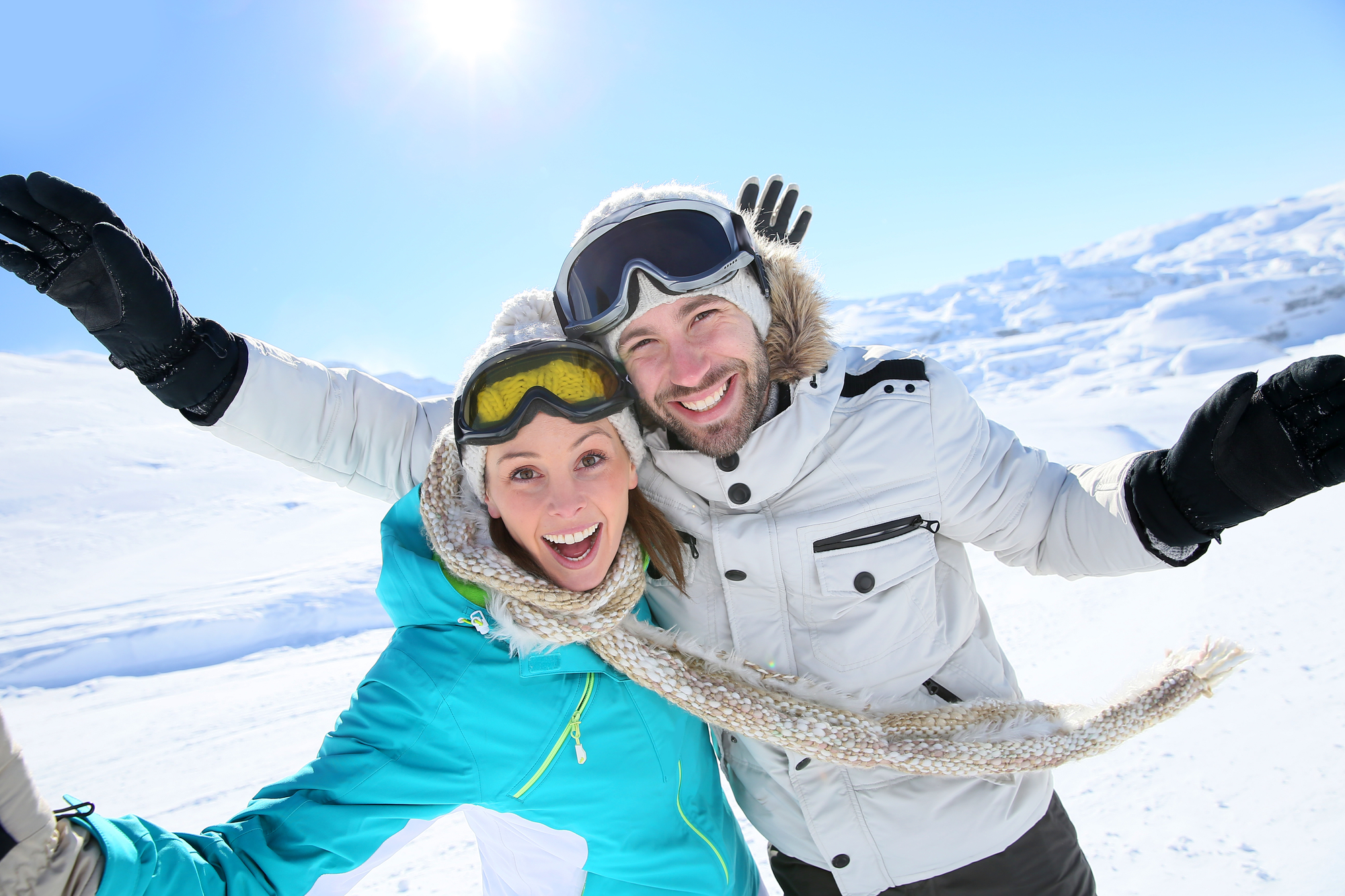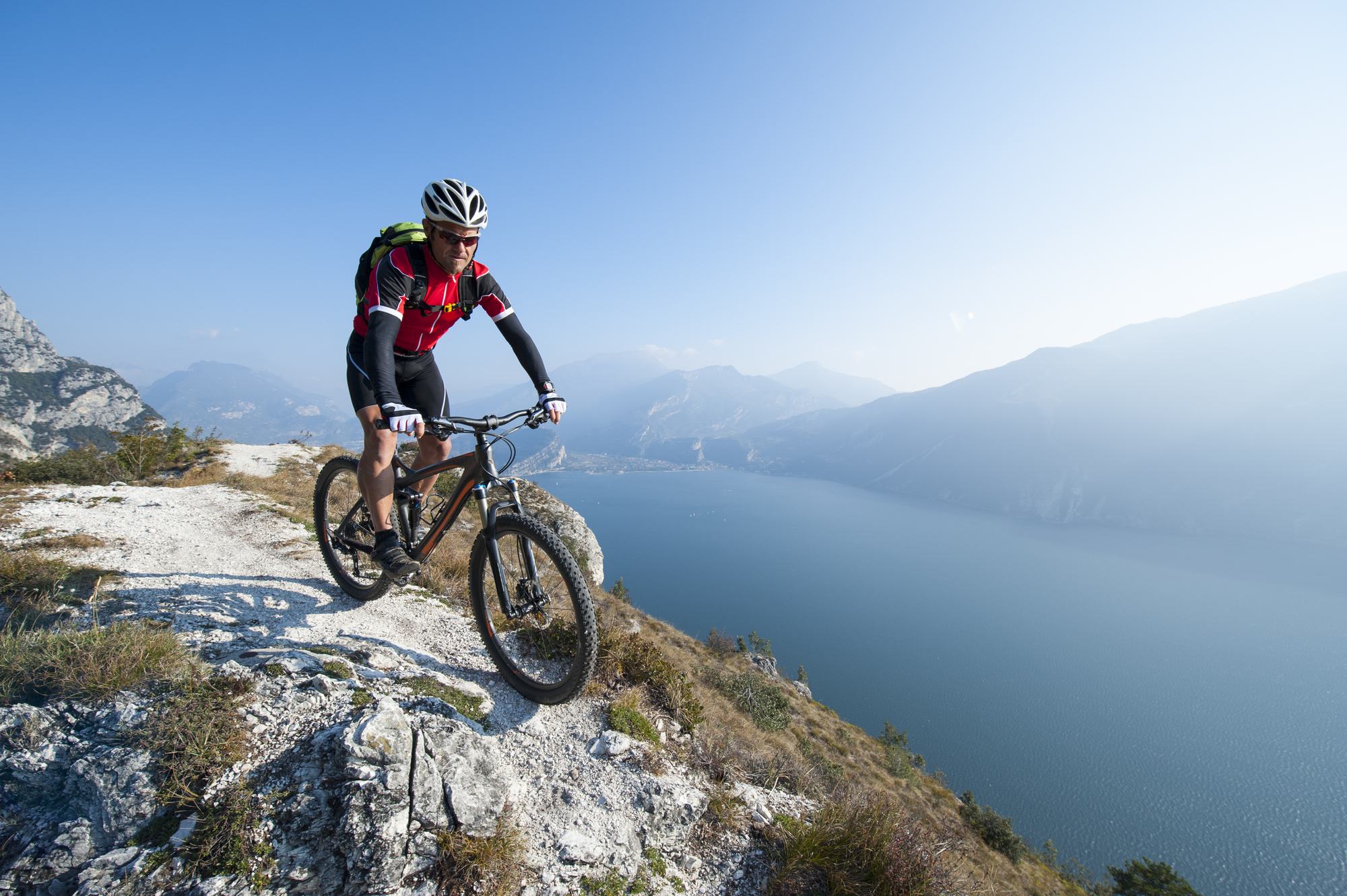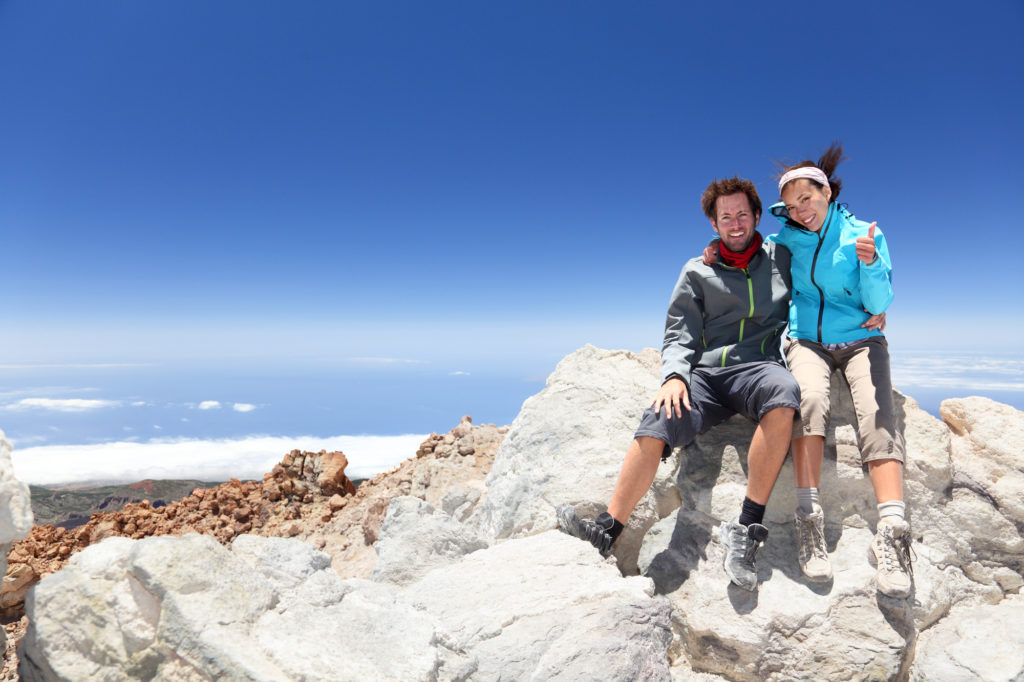
Are you thinking about taking an Adventure Vacation? A Bucket List Adventure?
Hiking the Grand Canyon? Whitewater rafting class 5 rapids on the Yellowstone River? Skiing Jackson Hole? Biking in Moab, Utah? What about climbing to the base camp at Mount Everest? Hiking the Inca Trail to Machu Picchu? Cycling in Provence or across Australia? A multi-sport adventure in Patagonia? The possibilities are endless.
Whatever you choose, get ready to have the time of your life.
But, first things first, it’s time to think about getting in shape—training for your Adventure.
Why is it important to train?
Being ready physically increases your chances of having an amazing experience. When you are in shape, you lessen the risks of injury and heighten your enjoyment.
And when you prepare ahead of time, you reap the secondary benefits.
Read more about this in my blog post: Book an Adventure Vacation — the Secret Ingredient to Getting In Shape!
What does it mean to “train” for my Bucket List Adventure?
To be in shape for your chosen event you might think “I’ll just up my workouts, add extra cardio and I’ll be ready.”
If only it were that easy!
I’m not trying to scare you away from your dream. I just want you to have an unbelievably amazing experience.
To be truly ready for any physically demanding event, everyone, no matter how “in shape” they are, needs a well-designed, safe and effective training plan.
So…if you are reading this blog, I’m guessing you have given some thought to training for your Adventure. In this post, I will walk you through some proven principles that fitness professionals use to devise the very best training plans.
Are you wondering “How hard can it be to figure out a plan?”. Believe it or not, there is actual science in the fitness industry.

Safe and effective training plans are backed by scientific research.
Fitness industry professionals know what works and what doesn’t work to get in shape. We know how to build strength and how to build endurance and how hard we can push safely. And it’s all backed by extensive research.
Okay, so are you asking, “Who is this guy?” and “Why should I trust his advice?”
My name is Nick Irons. I am an ultra-endurance athlete, an award-winning author, and founder of Irons Fitness, a personal training studio outside Washington, DC and Irons Active, a Fitness App for Active and Adventure travelers.
You may have heard my story. I made national headlines when I became the first person in 70 years to swim the length of the Mississippi River and the first to swim it with the locks and dams of its “modern” form.
But more importantly, I am a Certified Strength and Conditioning Specialist (CSCS) through the National Strength and Conditioning Association (NSCA). The CSCS is the required and rigorous certification for all college and pro strength and conditioning coaches. 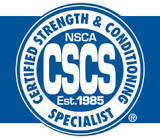
The diverse group of people who hold the CSCS includes strength coaches, athletic trainers, physical therapists, personal trainers, physicians, chiropractors, researchers, and educators. It is the only training certification that requires a college degree.
I love fitness and I love helping people reach their highest goals and aspirations. Whatever they are…in fitness, career, or life.
Health and fitness is the underpinning for making all our dreams happen.
I’d love to help you figure out the best way to physically prepare for your adventure vacation.
So let’s see how Fitness Professionals go about designing training plans.
We’ll look at 7 factors that a coach would take into consideration when designing an awesome, safe and effective training plan. These are things you will need to think about for your plan.
Table of Contents
-
- A needs assessment
- Exercise mode
- Exercise frequency
- Exercise intensity
- Exercise duration
- Exercise progression
- The overall plan
1. A Needs Assessment
A coach designing a training plan – whether it’s to prepare an NFL football player for the upcoming season, a running program for someone’s first marathon, or a plan to get you ready for an adventure vacation — will start by doing a needs analysis.
What is a needs assessment?
-
- A thorough assessment of your present fitness level.
- An evaluation of the requirements of the goals you’re trying to reach.
What does this mean in English?
Think of a training plan like Waze on your smartphone. Before the app tells you where to go, it first asks you for a starting point and a final destination. Until you give it those two points, it can’t help you. It doesn’t know where you’re starting from and it doesn’t know where you’re heading.
A needs assessment is the coach’s way of figuring out a starting point and a final destination.
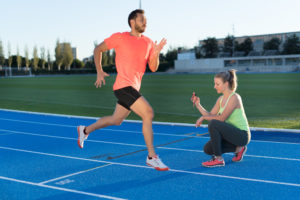
So a coach will start with a thorough questionnaire to get to know you and where you are right now. Before writing a plan, it’s imperative to know your current fitness level — your starting point. How far can you hike? Also, how fast can you hike? How far can you go uphill? And how fast can you go uphill? What is your max heart rate?
There is also a need to know the characteristics of your final destination. How far will you have to hike in a day? How many feet of elevation gain will you have? Just how many feet of elevation loss will you have? What is the pace of the hike? How many days in a row will you be hiking?
For example, a needs assessment might determine that right now, you can hike 2 hours. The trip you’re taking requires 5 hours a day of hiking. Your starting point is 2 hours. Your finish line is 5 hours.
The plan will need to take into consideration your starting and ending points for aerobic and anaerobic fitness.
A good coach will give you test workouts periodically to establish your baseline of fitness and to track the progress you have made. These test workouts are also a way for your coach to determine if you are in fact over-trained and need to back off a bit.
2. Exercise Mode
There is a principal in the strength and conditioning world called the SAID principal. It stands for Specific Adaptation to Imposed Demands. Wow. That’s quite the mouthful. No wonder they call it SAID. The principle states that the type of demand placed on the body dictates the type of adaptation that will occur.
So what does that mean?
It means that your body adapts to what you tell it to do. So, it’s important to choose workouts that are as similar to your goals as possible.
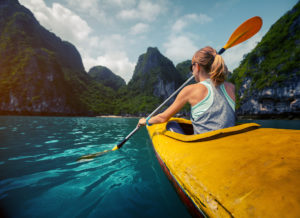
If you are taking a cycling trip, you should be spending most of your time on the bike. Or if you are going to be running, you will be running…a lot. If you are going to kayak, you need to spend most of your time kayaking.
If for some reason you can’t do those activities, due to time constraints, physical location, lack of equipment, etc., a coach would advise finding exercises that match as closely as possible to the type of activity you will be doing.
3. Training Frequency
When it comes to exercise, there are three main variables that a coach can adjust to write the most effective training plan for you. The first variable is training frequency. Simply put, how often do you train? Some people can train 7 days a week (not that they should) while others can only fit 3 days a week into their schedule.
So what is ideal? For most training plans, 4-5 days a week is ideal. Any more than that and you are more likely to be sore all the time, become over-trained, and start to lose interest. Too much less than that and your results will start to suffer.
4. Training Intensity
We talked earlier about the the SAID principal. Remember that? It was the one that says it’s important to choose workouts that are as similar to your goals as possible.
The same is true with the intensity of your workouts.
How hard you work when you are training should match how hard you will be working when you are on your vacation.
For example, if you are going to be hiking for 5 hours a day, you need to train at an intensity that will allow you to successfully hike for five hours.
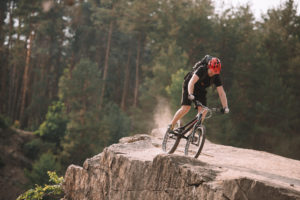
If you plan to cycle in the Alps, you need to add in some high-intensity training sessions that get you huffing and puffing and your legs burning. You should be very sweaty when you finish.
You can exercise aerobically — “with oxygen” — where your breathing and heart rate increase. Aerobic activities include any exercise done at a moderate intensity for an extended period of time.
Or you can work anaerobically which includes shorter, more explosive movement. You can think about aerobic exercise as running a marathon and anaerobic exercise as sprinting.
Good training plans will have a combination of hard training sessions and easy training sessions.
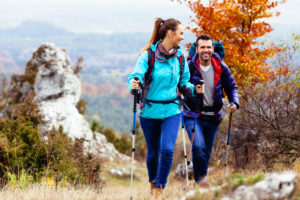
Why? Because all Adventure Vacations will have sections where the going is good. Where everything is easy and you’re not too out of breath.
And every journey will have stretches that will be hard. Whether it is a steep section of the trail or a headwind while kayaking or cycling, there will be times when things get tough for you. You should be prepared for anything.
How do you know if you are working hard enough or working too hard?
There are may ways to determine exercise intensity. For example:
-
- heart rate
- the ability to carry on a conversation
- the rate of perceived exertion
- a power meter
There will be a whole separate blog post coming on this subject in the near future.
5. Exercise Duration
There are four types of aerobic workouts that will be a part of any exercise program:
-
-
-
Recovery
As mentioned earlier, there are very good reasons to vary the intensity of your workouts. Some days will be hard and other’s will be easy.
The recovery workout is the easiest. There is no goal, no distance to hit, you just need to get out there and go.
-
-
-
-
-
Long Slow Distance
This is by far the most important part of any training plan for me. Like the name says, these types of workouts are long and they are slow. They cover long distances.
The goal is to increase your distance.They usually start at an hour and work their way up over time to just under your goal distance.
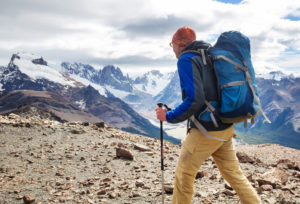
When a backpacker is trying to prepare for a long journey, they will start with an hour hike 3-months before they leave. Each week they will increase the distance of their long hike. By the time they leave for their trip, they are ready to complete their journey.
-
-
-
-
-
Tempo and Pace
When you do a tempo workout, your goal is to work as hard as possible aerobically. The goal of pace workouts is to increase how much work your body can do aerobically.
Adding these workouts into the plan will allow you to go harder and faster for longer. An example would be a marathon runner doing a 10k (6.2 miles) at a faster pace than they will be doing in their marathon.
-
-
-
-
-
Interval Training
The fourth type of workouts are interval workouts. These workouts have you exercise for a set period of time and then have you rest for a set period of time.
So, you might go hard for a minute and then rest for a minute. Or you might exercise for 5 minutes and rest for 5 minutes. The goal of interval training is to increase your speed. Interval training is how competitive swimmers train. Instead of heading to the pool and swimming 2 miles straight, competitive swimmers will instead do many repeats of shorter, harder sets with rests built in.

-
-
6. Exercise Progression
The progressive overload principle states: In order for a muscle to grow, strength to be gained, performance to increase, or for any similar improvement to occur, the human body must be forced to adapt to stressors that are above and beyond what it has previously experienced.
Whoa…what does that mean?
It means that you have to constantly make your workouts harder as your body gets used to them.
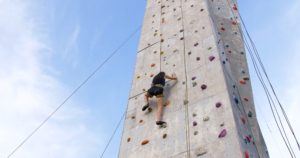
Have you ever wondered why you get stronger when you lift weights?
When you lift, you are doing microscopic damage to your muscles. However, as strange as this sounds, your body doesn’t like to be damaged. So, when it repairs itself, it makes the muscles stronger so that if you try to do that type of damage again in the future, it will be ready.
The same goes with aerobic exercise as well. Distances that you were not able to do will soon become too easy. Speeds you were not able to do before become easy as well.
In designing an effective plan, a coach will have a strategy for advancing your workout as you get stronger, faster, and in better shape.
The easiest way to calculate how fast to advance is called the 10% rule. This rule states that you can only increase your weekly distance by 10%. So, if you are hiking 10 miles in a week, you should not go up more than 1 mile in that week (10% of 10). Increase distance any more than that and you risk injury or over-training.
7. Overall Plan
So, once a coach:
-
-
- Does a Needs Assessment
- Determines Exercise Mode
- Determines Exercise Frequency
- Determines Exercise Intensity
- Determines Exercise Duration
- Determines Exercise Progression
-
they are ready to put it all together in a weekly plan.
For most athletes and most coaches, a weekly training plan could look something like this.
Monday – Recover Hike
Tuesday — Off
Wednesday – Tempo Hike
Thursday – Off
Friday – Interval Hike
Saturday – Recovery Hike
Sunday – Long Slow Distance Hike
The distances, speeds, work intervals and rest periods would be changed every week or as needed.
Conclusion
Whether it’s for an Adventure Vacation, or for an upcoming NFL football season, there is a very specific, scientific way to create a training program.
Each of the steps that I outlined above are required to make a successful training plan. Skip any step and the total plan won’t be as effective.

How do you take the information in this post and turn it into a training plan?
You can start by going through each of the steps listed below and answering the following questions:
1. Needs Assessment
-
-
- Where am I now?
- How long could I go today?
- How long do I need to go on my vacation?
-
2. Exercise Mode
-
-
- What activity am I going to be doing on my vacation?
- Can I train with that activity on a regular basis?
- If I can’t train with that activity, what exercises mimic it best?
-
3. Exercise Frequency
-
-
- How often can I realistically train?
- Will that frequency truly get me prepared for my journey?
-
4. Exercise Intensity
-
-
- How hard do I need to go to be fully prepared?
- How will I know if I am going hard enough?
- How will I know if I am going too hard?
-
5. Exercise Duration
-
-
- How long will I need to go to be fully prepared?
- Just how long will the long workouts be?
- How long will the shorter workouts be?
-
6. Exercise Progression
-
-
- How fast can I progress my workouts?
- When will I progress my workouts?
- In what ways will I progress my workouts?
- How will I know if I am progressing fast enough?
- How will I know if I am not progressing fast enough?
-
7. Overall Scheme
-
-
- What will I do each day?
- How do my daily workouts fit into a weekly plan?
- How do 4 weekly plans fit into the month?
- Just how do 3 monthly plans fit into a 12-week plan?
-
Using your answers, you can write a training program for your Adventure.
Then follow your plan, step by step. Your training program will get you in shape to enjoy the experience you’ve dreamed about.
If this all seems daunting to you, don’t worry, there is help available.
You may just want someone to do the work of developing a plan for you. If so, we can help. I would love to design a training program specifically for you.
If you want more info about our training plans….click here.
